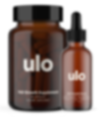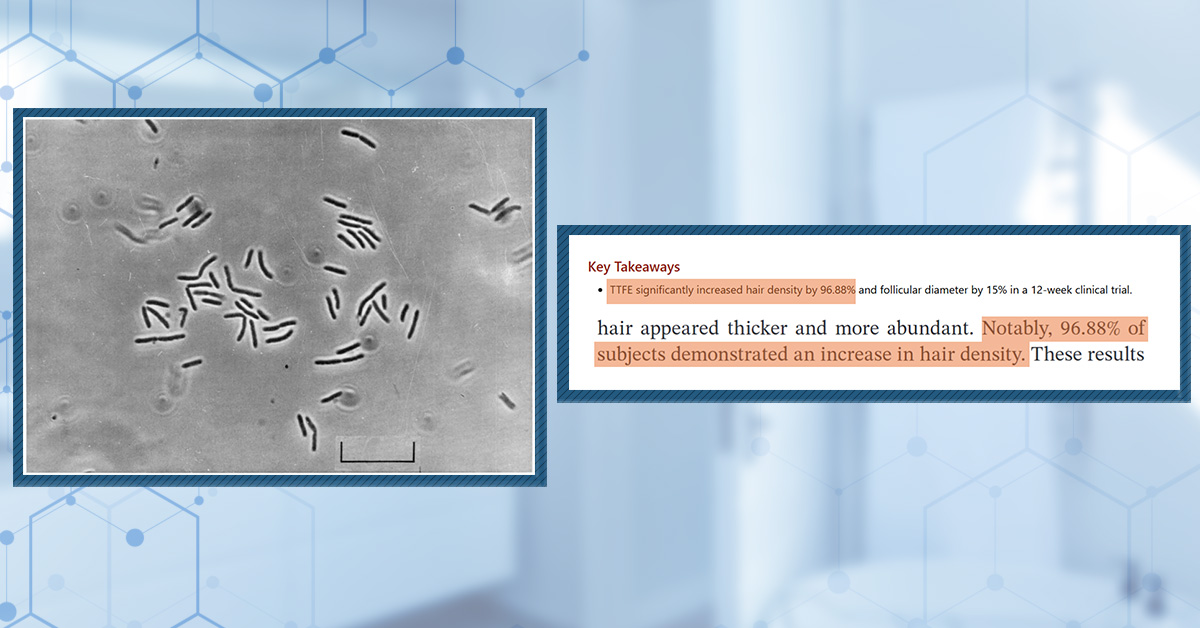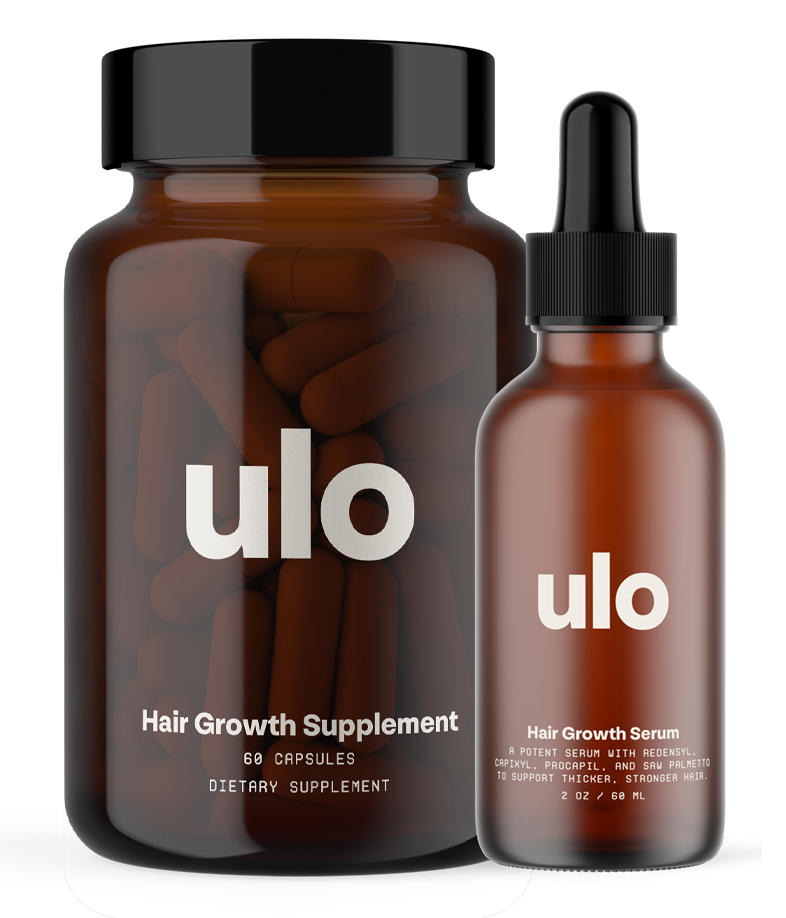- About
- Mission Statement
Education. Evidence. Regrowth.
- Education.
Prioritize knowledge. Make better choices.
- Evidence.
Sort good studies from the bad.
- Regrowth.
Get bigger hair gains.
Team MembersPhD's, resarchers, & consumer advocates.
- Rob English
Founder, researcher, & consumer advocate
- Research Team
Our team of PhD’s, researchers, & more
Editorial PolicyDiscover how we conduct our research.
ContactHave questions? Contact us.
Before-Afters- Transformation Photos
Our library of before-after photos.
- — Jenna, 31, U.S.A.
I have attached my before and afters of my progress since joining this group...
- — Tom, 30, U.K.
I’m convinced I’ve recovered to probably the hairline I had 3 years ago. Super stoked…
- — Rabih, 30’s, U.S.A.
My friends actually told me, “Your hairline improved. Your hair looks thicker...
- — RDB, 35, New York, U.S.A.
I also feel my hair has a different texture to it now…
- — Aayush, 20’s, Boston, MA
Firstly thank you for your work in this field. I am immensely grateful that...
- — Ben M., U.S.A
I just wanted to thank you for all your research, for introducing me to this method...
- — Raul, 50, Spain
To be honest I am having fun with all this and I still don’t know how much...
- — Lisa, 52, U.S.
I see a massive amount of regrowth that is all less than about 8 cm long...
Client Testimonials150+ member experiences.
Scroll Down
Popular Treatments- Treatments
Popular treatments. But do they work?
- Finasteride
- Oral
- Topical
- Dutasteride
- Oral
- Topical
- Mesotherapy
- Minoxidil
- Oral
- Topical
- Ketoconazole
- Shampoo
- Topical
- Low-Level Laser Therapy
- Therapy
- Microneedling
- Therapy
- Platelet-Rich Plasma Therapy (PRP)
- Therapy
- Scalp Massages
- Therapy
More
IngredientsTop-selling ingredients, quantified.
- Saw Palmetto
- Redensyl
- Melatonin
- Caffeine
- Biotin
- Rosemary Oil
- Lilac Stem Cells
- Hydrolyzed Wheat Protein
- Sodium Lauryl Sulfate
More
ProductsThe truth about hair loss "best sellers".
- Minoxidil Tablets
Xyon Health
- Finasteride
Strut Health
- Hair Growth Supplements
Happy Head
- REVITA Tablets for Hair Growth Support
DS Laboratories
- FoliGROWTH Ultimate Hair Neutraceutical
Advanced Trichology
- Enhance Hair Density Serum
Fully Vital
- Topical Finasteride and Minoxidil
Xyon Health
- HairOmega Foaming Hair Growth Serum
DrFormulas
- Bio-Cleansing Shampoo
Revivogen MD
more
Key MetricsStandardized rubrics to evaluate all treatments.
- Evidence Quality
Is this treatment well studied?
- Regrowth Potential
How much regrowth can you expect?
- Long-Term Viability
Is this treatment safe & sustainable?
Free Research- Free Resources
Apps, tools, guides, freebies, & more.
- Free CalculatorTopical Finasteride Calculator
- Free Interactive GuideInteractive Guide: What Causes Hair Loss?
- Free ResourceFree Guide: Standardized Scalp Massages
- Free Course7-Day Hair Loss Email Course
- Free DatabaseIngredients Database
- Free Interactive GuideInteractive Guide: Hair Loss Disorders
- Free DatabaseTreatment Guides
- Free Lab TestsProduct Lab Tests: Purity & Potency
- Free Video & Write-upEvidence Quality Masterclass
- Free Interactive GuideDermatology Appointment Guide
More
Articles100+ free articles.
-
Oral vs. Topical Dutasteride: What Studies Show
-
Minoxidil Shedding – What to Expect & When it Stops
-
Peppermint Oil for Hair Growth: Better Than Minoxidil?
-
Caffeine For Hair Loss (AGA): Evidence & Recommendations
-
Microneedling For Hair Loss: 5 Strategies to Reduce Pain
-
Saw Palmetto: Is It As Effective As Finasteride?
-
Platelet-Rich Plasma (PRP): Does It Regrow Hair? Maybe, Maybe Not.
-
The Misleading Results Of The Pumpkin Seed Oil-Hair Loss Study
PublicationsOur team’s peer-reviewed studies.
- Microneedling and Its Use in Hair Loss Disorders: A Systematic Review
- Use of Botulinum Toxin for Androgenic Alopecia: A Systematic Review
- Conflicting Reports Regarding the Histopathological Features of Androgenic Alopecia
- Self-Assessments of Standardized Scalp Massages for Androgenic Alopecia: Survey Results
- A Hypothetical Pathogenesis Model For Androgenic Alopecia:Clarifying The Dihydrotestosterone Paradox And Rate-Limiting Recovery Factors
Menu- AboutAbout
- Mission Statement
Education. Evidence. Regrowth.
- Team Members
PhD's, resarchers, & consumer advocates.
- Editorial Policy
Discover how we conduct our research.
- Contact
Have questions? Contact us.
- Before-Afters
Before-Afters- Transformation Photos
Our library of before-after photos.
- Client Testimonials
Read the experiences of members
Before-Afters/ Client Testimonials- Popular Treatments
-
ArticlesThermus Thermophilus Extract Does Not Increase Hair Density By 96.88%, Despite Dermatology Times’ Claims.
First Published May 12 2025Last Updated Sep 19 2025IngredientsResearched & Written By:Sarah King, PhDReviewed By:Rob English, Medical EditorWant help with your hair regrowth journey?
Get personalized support, product recommendations, video calls, and more from our researchers, trichologists, and PhD's dedicated to getting you the best possible outcomes.
Learn MoreArticle Summary
Can Thermus Thermophilus Extract (TTFE) really boost hair density by 96.88%? That’s what a recent Dermatology Times article claimed. But a closer look at the original study tells a very different story. In this article, we unpack the misleading interpretation of TTFE data, why it matters even when it comes from trusted sources, and how misinformation like this spreads through media, marketing, and even AI systems. We also highlight why scientific literacy and source-checking are more important than ever in the age of LLMs and rapid content creation.
Full Article
In a recent article published by Dermatology Times, a headline claim caught our attention: that Thermus Thermophilus Ferment Extract (TTFE) increased hair density by 96.88%.[1]Bosslett, M. (2025). Thermos Thermophilus Fermentation Extract Can Treat Androgenic Alopecia. Dermatology Times. Available at: … Continue reading
For anyone following advances in cosmetic dermatology, these numbers sound groundbreaking…almost too good to be true.
As it turns out, they are.
After checking out the primary research cited in the article, we found a significant discrepancy. The original scientific publication does not report a 96.88% increase in hair density. Instead, it states that 96.88% of study participants demonstrated some increase in hair density.[2]Hu, Y., Wei, Z., Wu, X., Peng, M., Sun, G., Liu, Q., Liu, Q., Zhang, S.Y. (2025). Efficacy of Thermus thermophilus Fermentation Extract in Promoting Hair Growth and Improving Scalp Health in … Continue reading
That’s an incredibly important difference. The distinction between an individual showing any degree of improvement and a universal 96.88% increase in hair density across the board is massive, and it alters the implication of the data entirely.
This isn’t just a nitpick over numbers either. It’s a textbook example of why critical reading and verification of scientific claims matter, especially when reported secondhand through news or industry outlets.
All-Natural Hair Supplement + Topical
The top natural ingredients for hair growth, all in one serum & supplement.
Take the next step in your hair growth journey with a world-class natural serum & supplement. Ingredients, doses, & concentrations built by science.

Source Credibility: It’s Not Always What It Seems
Dermatology Times is generally seen as a reputable source in the field. That’s what makes this kind of misrepresentation especially concerning. When trusted publications get it wrong, intentionally or not, their errors don’t stay contained. They often cascade across social media, blog posts, product marketing, and even into conversations with patients and consumers.
Even more concerning is the growing trend of these misrepresentations being fed into large language models (LLMs), which are increasingly used to draft content, summarize literature, and even power patient-facing AI chatbots. A mistake published by one reputable site can propagate quickly and silently through an entire ecosystem of content. And unless someone goes back to the original research, the error persists, unquestioned and amplified.
AI and the Amplification of Inaccuracy
We recently released a video titled “Can A.I. Cure Hair Loss?” in which we discussed how even credible websites can unintentionally (or in some cases intentionally) misrepresent scientific findings, and how those misrepresentations become embedded in AI systems trained on web content.
Language models, while powerful, often operate without a true understanding of source hierarchy or context. If a high-ranking article contains an error, that information can be treated as fact during the training or generation process. The AI doesn’t discern whether a number came from a peer-reviewed journal or a poorly paraphrased blog; it just sees frequently repeated data and assumes it’s accurate.
This creates a feedback loop:
- A respected outlet publishes a flawed interpretation.
- The article is picked up or paraphrased by other sites and influencers.
- AI tools trained or fine-tuned on public data scrape these articles.
- The AI outputs this information again, reinforcing the misconception.
- Users, assuming the AI is drawing from trustworthy sources, believe the claim.
In the case of TTFE, a single misread statistic could lead to widespread misinformation about the effectiveness of an ingredient, influencing product development, marketing strategies, and even clinical recommendations.
Why Scientific Literacy Still Matters
This situation highlights an uncomfortable but necessary truth: even reputable sources are fallible. That’s not necessarily due to malice or laziness, but it can be damaging all the same. Scientific literacy and, more specifically, source literacy, are essential for this.
We can make sure we can maintain this by:
- Checking the original studies when possible.
- Noting the difference between relative and absolute claims.
- Being cautious of statistics that lack context or citations.
- Understanding the limitations and structure of the research.
It’s equally important for those disseminating information to cross-verify claims before repeating them. This isn’t just about credibility, it’s about maintaining trust in an industry that already contends with skepticism and pseudo-science.
To be clear, we are not accusing Dermatology Times of deliberately misleading readers or of using AI to generate or publish the article in question. But this incident underscores the broader issue: errors can and do happen even at high levels, and when they do, their ripple effects are hard to contain.
That’s why we believe it’s worth talking about this openly and constructively. It’s not just about holding publications accountable, it’s about all of us taking responsibility for the accuracy and integrity of the information we consume and share.
Final Thoughts
The science behind ingredients like TTFE is worth discussing, and we encourage further study into its potential for hair growth and skin protection. But these conversations must be rooted in accurate, well-contextualized data, not inflated statistics of misunderstood summaries. In an era where AI-generated content is becoming more common, the responsibility to ensure scientific accuracy is higher than ever. We can no longer rely solely on the reputation of a publication or the polish of a press release. We need to dig deeper, question assumptions, and value transparency over hype.
After all, if 96.88% of readers walked away with a fundamentally incorrect understanding of the data, what does that say about how we’re communicating science?
References[+]
References ↑1 Bosslett, M. (2025). Thermos Thermophilus Fermentation Extract Can Treat Androgenic Alopecia. Dermatology Times. Available at: https://www.dermatologytimes.com/view/thermus-thermophilus-fermentation-extract-can-treat-androgenic-alopecia (Accessed: May 2025) ↑2 Hu, Y., Wei, Z., Wu, X., Peng, M., Sun, G., Liu, Q., Liu, Q., Zhang, S.Y. (2025). Efficacy of Thermus thermophilus Fermentation Extract in Promoting Hair Growth and Improving Scalp Health in Androgenic Alopecia: A Clinical and In Vitro Study. Journal of Cosmetic Dermatology. 24.e70095. Available at: https://doi.org/10.1111/jocd.70095 Want help with your hair regrowth journey?
Get personalized support, product recommendations, video calls, and more from our researchers, trichologists, and PhD's dedicated to getting you the best possible outcomes.
Learn MoreSarah King, PhD
Dr. Sarah King is a researcher & writer who holds a BSc in Medical Biology, an MSc in Forensic Biology, and a Ph.D. in Molecular and Cellular Biology. While at university, Dr. King’s research focused on cellular aging and senescence through NAD-dependent signaling – along with research into prostaglandins and their role in hair loss. She is a co-author on several upcoming manuscripts with the Perfect Hair Health team.
"... Can’t thank @Rob (PHH) and @sanderson17 enough for allowing me to understand a bit what was going on with me and why all these [things were] happening ... "
— RDB, 35, New York, U.S.A."... There is a lot improvement that I am seeing and my scalp feel alive nowadays... Thanks everyone. "
— Aayush, 20’s, Boston, MA"... I can say that my hair volume/thickness is about 30% more than it was when I first started."
— Douglas, 50’s, Montréal, CanadaWant help with your hair regrowth journey?
Get personalized support, product recommendations, video calls, and more from our researchers, trichologists, and PhD's dedicated to getting you the best possible outcomes.
Join Now - Mission Statement
 Scroll Down
Scroll Down










